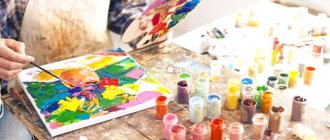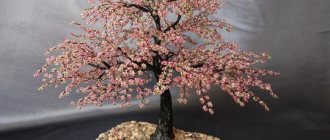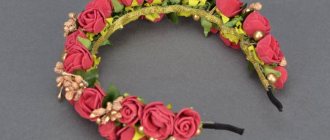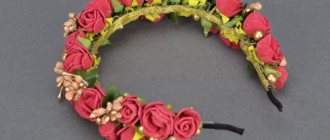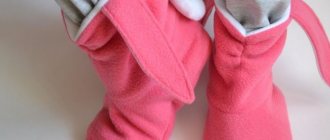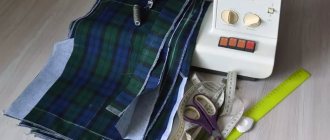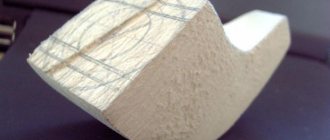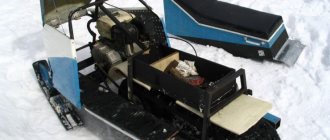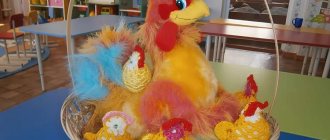The birth of a child is an important event in the life of any family. They carefully prepare for it and think in advance about what toys the baby should have so that he develops properly. The most interesting specimens are rattles. Colorful, noisy - they will certainly attract the attention of a newborn.
Of course, similar children's products can be purchased in the store. But many parents want to be sure of the environmental safety of the toys their baby plays with, and therefore prefer to make a rattle themselves.
Criteria for the first toys
- First of all, you need to remember safety.
- It is important that the rattle does not disassemble into small parts and does not have any at all.
- When making a rattle, you should use only environmentally friendly materials, preferably easy to clean.
- It is important that there are no sharp edges or corners.
- A combination of two contrasting tones is not recommended.
Necessary materials
- You must understand that the basis of household rattles is some kind of container and rattling filler. For this purpose, you can use kinder eggs, balls, and bottles. As for the filler, it can be beads, cereals, buttons, peas, small pebbles.
- When deciding on a capsule, you need to take into account the size of the future toy.
- For good sound, it is important to choose a durable container with hard walls.
- You must understand that how a toy will sound depends on the amount and type of filler.
- You may also need:
- yarn;
- colored threads;
- knitting needles;
- needle;
- scissors;
- buttons (future eyes);
- textile.
What is amigurumi
Amigurumi is a Japanese technique for knitting small toys, both knitting and crocheting. Recently, more and more people are crocheting these toys, because the hook makes it easy to make intricate patterns. The sizes of the toys are quite miniature, they rarely exceed 10 centimeters in height, but some prefer to knit large toys.
They prefer to make toys with black round eyes and cute noses. They are most often made in the form of an animal - a lamb, a bunny, a kitten, but they are also made in the form of inanimate objects - the sun, cakes, cars.
Amigurumi appeared fifty years ago, when in Japan the word “kawaii” was increasingly heard, meaning something cute and beautiful. The symbol of this concept is the Hello Kitti kitten. The people of Japan immediately liked this kitten, and after that the brand became famous throughout the world. There are countless photos of amigurumi on the Internet from inspired owners.
Octopuses
In order to create such a rattle, you must have knitting skills. You will need:
- egg from Kinder Surprise;
- needle;
- sewing threads;
- 6 balls;
- cereals or beads;
- two small buttons;
- multi-colored yarn.
- The Kinder egg contains grains or beads that will give the sound to the rattle.
- The knitting process begins with four loops, then knit in the round.
- You can change the colors to make the toy more interesting.
- All knots are tucked inside.
- Constantly try on products to match the Kinder egg.
- When knitted to the middle, you need to start reducing the number of loops.
- At the end we leave a hole into which the capsule can be inserted.
- Sew buttons in place of the eyes.
- Insert the capsule into the case and sew up the bottom.
- The balls are tied to the octopus's body using multi-colored threads.
Knitting a bear's head.
We start knitting the bear's head from the front part (i.e. from the side of the muzzle).
Tie 2 ch. (air loops).
1st row:
Knit 6 sc (single crochets) into the second loop from the hook.
2nd row:
increase in each loop of the previous row (12).
3rd row:
(1 sc, 1 increase) - repeat until the end of the row, i.e. 6 times (18).
4th row:
(2 sc, 1 increase) - repeat until the end of the row (24).
5 row:
(3 sc, 1 increase) - repeat until the end of the row (30).
6th row:
(4 sc, 1 increase) - repeat until the end of the row (36).
7th row:
(11 sc, 1 increase) - repeat until the end of the row, i.e. 3 times (39).
Rows 8-12:
39 sc.
Row 13:
(11 sc, 1 decrease) - knit to the end of the row, i.e. 3 times (36).
Row 14:
(4 sc, 1 decrease) - repeat until the end of the row (30).
Row 15:
30 sc.
Secure the eyes between the 4th and 5th rows. The distance between the teddy bear's eyes is 4 loops.
Place some stuffing inside the knitted piece, then a rattle, and then more stuffing.
Row 16:
(3 sc, 1 decrease) - to the end of the row (24).
Row 17:
(2 sc, 1 decrease) - to the end of the row (18).
Row 18:
(1 sc, 1 decrease) - to the end of the row (12).
Row 19:
We knit decreases to the end of the row (6).
Tighten the hole and finish knitting the bear's head.
Toy with a handle
- one or two kinder eggs;
- pencil;
- natural yarn, preferably bright colors;
- small objects, such as peas;
- wrapping fabric;
- thread and needle.
- In the Kinder egg, you need to make a hole on one or both sides, depending on what kind of toy will be created: with sound from one end or two.
- It is important that the pencil fits tightly into the egg.
- After fixing the pencil, you need to wrap it in padding polyester or soft cloth and sew it up so that it does not open.
- Objects are placed in the egg that will create a rumble.
- Now you need to tie the whole toy with threads. The process starts from the bottom, first the pencil is knitted, then the egg itself.
Let's start knitting
First, you need to choose what you want to create. Look on the Internet for a pattern you like and find a knitting pattern for it. Many authors advise beginners to start mastering knitting with the “House” toy model. In this way, experience is gained and skills are formed before performing more complex crafts.
For the “House”, six square blanks of the same size are knitted; they will form the side edges and the roof of our toy. Next, all these parts need to be sewn together, filling the product with synthetic padding. By finishing and decorating we add the necessary details: the front door, windows, curtains, fence, flowers and even a watchdog.
For more complex models than the “House”, you won’t be able to simply remember the diagram; it would be best to write it down or print it out so you can check it while working.
Many toys use an air loop (HL), they start knitting with it, and also, and maybe more often, use a “magic ring” or an amigurumi ring (KA).
Bracelet
This is a DIY rattle that can be attached to a child's hand. For the product you will need:
- high-quality fabric of four types (pieces);
- small buttons (for eyes);
- Velcro fragment;
- needle with thread;
- balls from an old rattle;
- a ribbon made of soft dense fabric is the base of the bracelet;
- padding polyester for filling the head.
- First you need to sew a bracelet. To do this, the circumference of the child’s hand is measured and its width is determined. When measuring, add 4 cm so that the toy can move freely, plus 3 cm for Velcro. The width should be about 3 cm.
- The fabric is sewn from the inside out. A thick tape is placed inside. To secure it, you can stitch it in the middle.
- Velcro must be sewn to the edge. The bracelet itself is ready.
- Your task is to decorate it by sewing on the animal’s head. For it you need to draw a pattern, do not forget about the need for two parts of the head and four ears.
- The ears are sewn from the inside out, turned outward and ironed.
- To make the muzzle voluminous, you need to make two grooves on the sides.
- A nose and eyes are sewn to the face, and a mustache and mouth are embroidered.
- Now you need to sew on the ears, sew the back and front of the head. Don’t forget to leave room for placing padding polyester and rattle balls. After this hole you will need to sew up and attach the head to the bracelet.
Handicraft Basics
Thin threads are knitted with a small diameter crochet hook. The tool is held in the hand like a pen or like a table knife. For tight weaving, use a post without throwing a loop. The columns are connected, the edges are strengthened, and the thread is moved to another position using a half-double single crochet design. The soft, light fabric is made in columns with a loop thrown over it.
The description of knitting toys often includes the choice of yarn, printed material, pattern, without which it is impossible to create things. Acrylic threads or cotton yarn mixed with wool are suitable. The knitting differs in density so that the stuffing does not come out between the loops. The filler is made from synthetic materials.
Rattle from a bottle
- You will need a plastic jar or bottle, but not glass. It is advisable to use a transparent container.
- Sequins or multi-colored beads are poured inside.
- Carefully secure the lid without using glue, for example, by fusing the plastic lid with a fixing ring; you can also crochet or sheathe it.
- Now you need to make a cover that matches the size of the container and tighten it around the neck.
Soft toy with a surprise
To create such a rattle, you need to sew a rattling object into a soft toy. These could be metal bells or a kinder egg with peas. The main thing is that the object makes some sound. It will be even more interesting if the child has a plush friend consisting of several parts. So you can sew filling with cereal into one part, beads into another, a strong rattle into the third, and crispy polyethylene into the fourth. This way, the child will be able to play with the parts of the plush friend and listen to different sounds.
Photos of famous works: ideas for inspiration
There are many famous needlewomen, and not only women, who can boast of wonderful knitting works. We invite you to evaluate the works of Alan Dart, Mary Jane, Susan Hickson, Elena Belova. Beautiful works will help inspire you and give you the strength to create more. Just be warned: these jobs are far from being for beginners, they are very complex and require a lot of effort and time.
Knitted toys from Alan Dart
Knitting toys by Susan Hickson
Knitted toys from Elena Belova: ideas for knitting
We use tin cans
- a baby food or tea jar with a tight-fitting lid and smooth edges;
- for one rattle you will need one sheet of paper;
- PVA glue;
- tape (transparent, wide);
- scissors;
- magazine with pictures;
- buckwheat grain.
- If the baby is very small, then it is better to take a lighter jar.
- Beautiful pictures are cut out from a magazine. When choosing images, stick to one theme, such as transport, fruit or animals.
- A clean jar is covered with white paper and secured with transparent tape.
- Pictures are pasted onto a white background. You can also use stickers or draw images yourself.
- Open the jar and pour in the cereal.
- The lid fits well. It is better to use glue and then secure it with tape.
Now you know how to make a rattle with your own hands. As you can see, this process can be quite simple. Of course, it will be easiest for needlewomen, especially those who know how to crochet. If you are unable to make such toys yourself, you can turn to your grandmother for help; she will be happy to create a rattle for her beloved grandson.
Source
Slingobuses
You can also knit a toy for your baby - baby sling beads, which will be in front of his eyes and at hand (that is, on his mother’s neck :))
In order not to forget the address of the page and share with friends, add it to your social networks: Do you want to know news about competitions or master classes?
Tags: DIY toys, For kids
Attention! It is better to write urgent questions in the comments on the website (form at the bottom of the page) or, better yet, directly by email. There are no notifications about comments from the VKontakte form! This form is more for feedback. 
Discussion: 4 comments
- Olga:
May 20, 2016 at 0:56 amWonderful toys for baby. With these, you can be absolutely sure that they are absolutely safe for the child. It's a pity that there is no one to knit these.
Answer
Larisa:
May 22, 2016 at 01:28 pm
And you stock up))) Or to the store... I’m just thinking, what if a child gets tired of such a toy on his hand... and can’t get rid of it...
Answer
Olga:
May 22, 2016 at 4:50 pm
In fact, the child may not like the toy at all. For some reason, it is not customary to ask whether a child likes a toy or the clothes they put on him - the main thing is that his mother and grandmother like it. But children always directly show what they like and what they don’t, it would be possible to listen to the child’s opinion, he is a person, not a doll.
- Larisa:
May 25, 2016 at 11:46 am
Yes, here, of course, you need to look at the child’s reaction. But, again, until you make such a bracelet and try it on, you won’t know)
